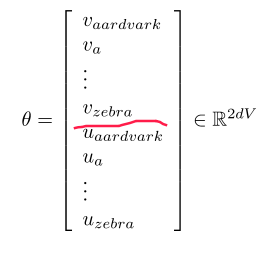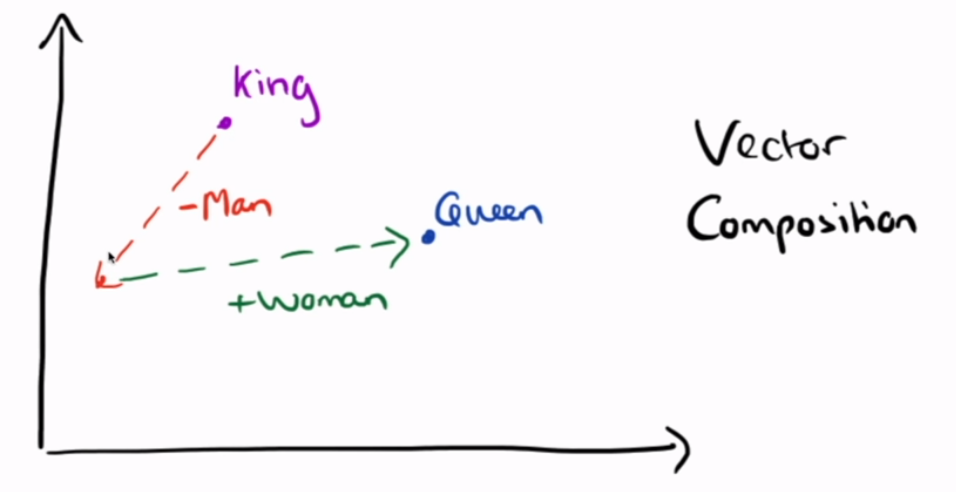Course intro

Word Meaning and Representation
denotational semantics
wordnet (nltk): word meanings, synonym, relationships, hierarchical
pb: missing nuance, missing new meanings, required human labor, can't compute word similarity
Traditional NLP (untill 2012):
- each words are discrete symbols — "localist representation"
- use one-hot vectors for encoding

- pbs with one-hot vecotrs:
- large dimension size
- each two words are orthogonal, no relationships between them
distributional semantics: A word’s meaning is given by the words that frequently appear close-by. ⇒ Use the many contexts of w to build up a representation of w.

"distributed representation": use dense vectors for each word, so that it is similar to vectors of words that appear in similar contexts.
Word2Vec Introduction
word2vec algo: for learning word embeddings.
idea
- start with large text corpus
- each word from the (fixed) vocab has a vector v — start with rand vectors
- for each center word
cand context(outside) wordo: - use
sim(c,o)to computeP(o|c)orP(c|o). - update the vecs to maximize the probability


likelihood
Likelihood := product of all predicted probabilities for all window words (fixed window sz= m ), for all positions t .

Loss function
⇒ take negative log likelihood as loss function:

Prediction function
⇒ probability prediction P(o|c) is a function of the word vectors:
- we use two vectors per word:
- use
v_wwhen word w is the center word - use
u_wwhen w is context word. - proba = softmax of the dot products
dot(v,u)for all context word u in Vocab.

optimization
θ :=all parameters in the model, i.e. 2*V vectors (u/v), each of dimension d .

gradient descent: compute all gradients of θ w.r.t.loss function J(θ) .
I.e.compute dJ(θ)/dθ, which is 2*d*V dimension.
Word2vec Derivations of Gradient


using chain rule and multi-var derivative:

⇒ slope of the vector v_c w.r.t. J_c,o
equals the current vector u_o minus the weighted average of context word u_w , i.e."expected context word".
Gensim Word Vector Visualization
gensim: word similarity package
word composition

Part 1 of series «XCS224N: NLP with deep learning»:
- [XCS224N] Lecture 1 – Introduction and Word Vectors
- [XCS224N] Lecture 2 – Word Vectors and Word Senses
- [XCS224N] Lecture 3 – Neural Networks
- [XCS224N] Lecture 4 – Backpropagation
- [XCS224N] Lecture 5 – Dependency Parsing
- [XCS224N] Lecture 6 – Language Models and RNNs
- [XCS224N] Lecture 7 – Vanishing Gradients and Fancy RNNs
- [XCS224N] Lecture 8 – Translation, Seq2Seq, Attention

Disqus 留言